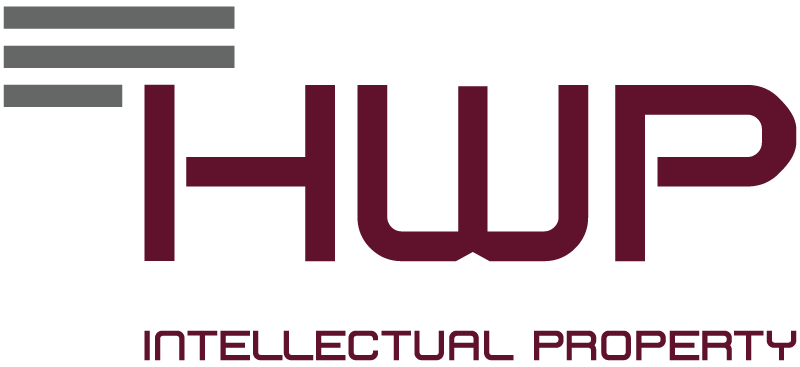Legal Fields
Applying for Patents
From the emerging of a patent application to it being granted
A well-prepared patent application does not only require a consultation by an experienced patent attorney from the time of the “Invention Disclosure”.
Instead, it already starts in the early stages of an idea with a dialog between the inventor and the patent attorney. In this way and especially when discussing the new idea, the inventor and the patent attorney find ways to approach the subsequent patent research.
The results of this research are a basis for successfully focussing the idea in the direction of a new invention.
By that, both the development process becomes more efficient and the quality of a later patent application is increased. Likewise, we can assist you in finding so-called “white spots” in the patent world.
Together with our clients, we then bring the detected technical solution into the shape of a patent or utility model application.
In this connection, both the comprehensive and comprehensible presentation of the invention with respect to the granting procedure as well as the wording of clearly-defined claims for a later good enforceability of the protective right is self-evident for us.
In the course of the granting procedure, we support our clients actively by making recommendations on steps ahead. In doing so, we always also focus on the product actually distributed, since later, the main purpose of a good patent is to protect your products and give you an edge over your competitors.
Your patent after grant
For us, it is also a matter of course that we represent you in an efficient and targeted way when it comes to a possible opposition or invalidity procedure later by taking into account your interests and the products covered by the patent.
We also support you in case a competitor infringes one of your patents. For this purpose, we advise you to find and implement strategies which are legally possible and commercially viable in this case.
Patent Infringements
Patent infringement from the patent owner’s point of view
The enforcement of patents requires the patent owner to be particularly attentive on the market so as to be able to recognize any patent infringement at an early stage.
Part of this is, for example, that those people from the sales department who visit clients and are present at trade fairs know their company’s patent portfolio. We support your sales department at this preparatory stage, for example by providing suitable mind maps or training for them to understand their own protective rights.
Should you become aware of a possible patent infringement, a corresponding analysis is inevitable. On that basis only, a confrontation of a possibly infringing competitor can be adjusted to the particular situation and an unjustified formal warning can be avoided.
If an out-of-court settlement with a possible infringer is neither wanted nor realizable, we, supported by our cooperating attorneys-at-law, will assist you in the course of legal disputes. For this purpose, we consider the possibilities on how to proceed, by, for example, obtaining a preliminary injunction, a border seizure or by asserting information and disclosure claims.
Of course, we will also keep an eye on a possible attack by the patent infringer to be able to repel an invalidity action, i.e. an examination of the validity of your protective right.
Patent infringement from the alleged infringer’s point of view
After receiving a request to produce legitimacy or a warning notice, an efficient, rapid and professional reaction towards the patent owner is important, so as to avoid unnecessary concessions to the patent owner and assess the relevance of the accusation.
The basis for a prompt and reliable reaction is the analysis of the situation from the patent point of view as well as the discussion of further opportunities and strategies of defence.
A commonly used tool to defend oneself against a patent owner is to file a nullity action, or to achieve a workaround solution by protecting your own patent.
Additionally, we support you in avoiding patent infringements, for example by means of “Freedom-to-Operate Analyses”.
These analyses verify whether one of your planned product infringes third party’s property rights. In this way, and depending on the development stage of your product, an alternative technical solution may either be found, or the risk of a possible dispute with a patent owner may be assessed.
Designs
As far as our experience goes, the protection of designs is becoming more and more important as a supplementary protection for patents and utility models.
A protected design is an intellectual property right which can be checked quickly and easily by customs authorities during the import and export of goods. Therefore, we always also recommend the filing of a design application in addition to a patent application for important products.
Trademarks
With regard to trademark legislation, similarly to patent legislation, we assist you already prior to filing the trademark application.
For example, we advise you during the development of your trademark already by means of preliminary surveys or analyses of the respective mark with respect to possible grounds for refusal.
Additionally, we suggest territorial and economically adapted application strategies based on the countries which are relevant for you.
As soon as the trademark has been registered successfully, we monitor your trademark in order to defend it against possibly colliding, younger trademarks. The same applies to a possible trademark infringement by a competitor.
For us, part of this is also to examine further claims together with attorneys-at-law based on the “complementary protection of performances” based on the German Law on Unfair Competition (UWG).
employee-inventions
Each German invention made by an employee and associated to the employer he or she works for, is subject to the German Employee Invention Law, which states that the right to file an application automatically passes to the employer. In return, the employer must pay a reasonable remuneration to the employee.
We are happy to advise your company as employer when it comes to determining the appropriate remuneration and its amount in case potential disputes arise with your employees.
In this context, we will also offer you the development of a remuneration system for the inventors of your company.
Utility Model Legislation
The utility model, in its role as the “little brother” of the patent, requires the same accurate and precise approach as a patent when elaborating an application (see above).
Since the utility model is, an unexamined intellectual property right, its enforceability requires particular attention when it comes to a possible infringement of a protective right. In this case, we support you in our usual way.
License and Contract Law
Principally, intellectual property rights may be part of contracts in the form of intangible property. Intellectual property rights may, for example, be transferable among the individual group companies within the group, or be part of licensing agreements, in particular when a company group holds all intellectual property rights of the group.
In terms of a cooperation with third-parties that are not part of the group, a contractual regulation regarding possibly emerging or existing intellectual property rights is also essential in order to avoid later negative surprises.
Owing to our long-term experience, we assist you from the very beginning of negotiations with third-parties by reviewing and drafting non-disclosure agreements. We will be there for you during the corresponding process up to the research and cooperation contracts. In this connection, we prepare the framework conditions with our clients in order to ensure a successful cooperation with third parties.

